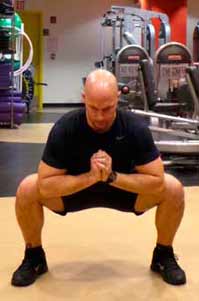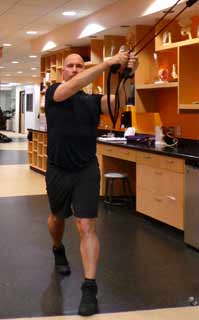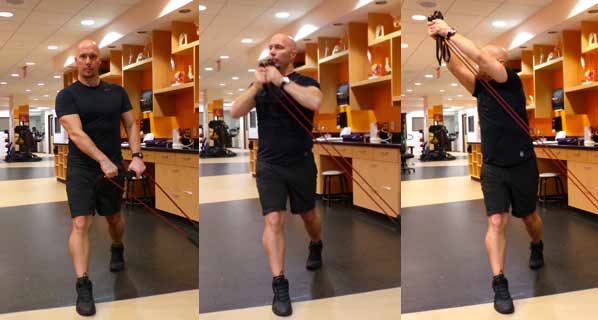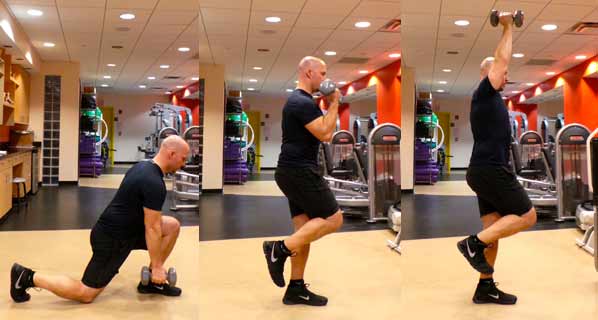Do we lose functionality because we get old? Or do we get old because we lose functionality?
This is a bold title and it may be taking a few liberties without knowing your personal circumstances. But if this sounds a bit presumptuous, consider how injuries and/or loss of functionality can affect your everyday life. In an era where exercises are more likely to be selected for how they will make us look rather than for what they will help us do, shifting at least part of our focus to exercises designed to prevent injury and improve function may just change your current and future quality of life.
Prerequisites: Quality Over Quantity
For many people, the biggest challenge is not the exercises that are featured here, but the mindset we have when approaching them. For functional exercises to reach their maximum potential, you need to let go of some common approaches. How much and how many is not as important as how well you perform them. If you are doing these exercises for the very first time and performing them with traditional fitness numbers, you are doing them wrong. This may also be a bit presumptuous (and I don’t use the term “wrong” often), but there is a fine line between a “functional exercise” that can enhance your life and a dysfunctional exercise that can cause injury. Not only is movement mastery the first priority in the beginning, it should be the only priority.
The following exercises are designed to improve functional strength, balance and range of motion. Incidentally, not only will these exercises not take away from general fitness and aesthetic goals, they can actually enhance them.
Learn How to Deep Squat
Purpose: Increased mobility of the ankles, knees and hips; increased functional range of strength; stronger glutes (butt), quads, hamstrings and calves; help protect the back and improve lifting mechanics
For decades, deep squats have been misrepresented as being “bad” for you, although nobody seems to be able to produce scientific evidence that deep squats that areperformed well are, in fact, dangerous. “Bad” is rarely found in the exercise itself and more in the way we approach and perform our exercises. Volume and intensity (quantity) that precedes good form (quality) can cause injury for any exercise and it will do little to improve function and performance. Chances are, you squatted quite well as a youngster, but may have lost your functional ability to perform a good deep squat. Rather than loading up a partial squat with resistance, reps and sets, instead focus on increasing the functional range of motion of the squat with your own body weight. A full body-weight squat alone can be a significant contributor to functionality. Whether you choose to incorporate resistance in the future is up to you and your goals, but master a full-range bodyweight squat first. Then you can gradually add in fitness training numbers.
Note: If you have no known restrictions or injuries that may place you at risk, learning (or relearning) how to do deep squats can significantly help improve functionality; it is also a skill that will help carry with you through the rest of your life. If you feel restrictions beyond tight muscles or pain, you may need to be evaluated by a doctor or physical therapist before performing these exercises.
The following two exercises can help you develop or maintain a good deep squat:
Squat Stretch

-Squat your hips down to knee height or slightly below your knees (thighs parallel or below parallel to the ground).
-Place your elbows on the inside of your thigh/knee.
-Give a slight nudge out with your elbows (this will stretch the adductors/inner thighs).
-Maintain a relatively straight back.
-Keep at it until you can achieve good form.
4-step Squat Progression
-Hang down as if to perform a hamstring stretch.
-Hold your feet tightly and drop into a squat with your elbows straight and positioned inside your knees.
-Hold for 2-5 seconds in the squat position before raising your hips to straighten your legs (keep holding your feet).
-Stand up and repeat. Perform slow and methodical movements. Each rep should allow you to get a little lower.
Learn How to Deadlift
Purpose: Improved proper lifting mechanics for everyday life; stronger glutes, hamstrings, core/back and shoulders girdle
There are basically two ways to lift objects from the floor: squatting or bending. Technically, they may both be considered versions of a deadlift, but bending is the more commonly accepted version. The key to deadlifting is to maintain a neutral spine and hinge at the hips. The knees should be bent slightly, but little movement will take place at the knees.
Prerequisite Exercise: Dowel Hip-hinge

-Find a dowel or broom stick (something that is rigid and very light).
-Place the dowel behind your back with one hand in the small of your back and the other in the small of your neck.
-Create three points of contact with the dowel, connecting with your head, your upper back and your sacrum (tailbone area).
-Practice bending forward by pushing your hips back without losing contact with the three points.
-Contact with your sacrum is the most important part. If the stick comes off of the sacrum, you have moved at your spine and you are not ready to perform a deadlift.
Resisted Deadlifts
-Use a Kettlebell (KB) or a dumbbell (DB) flipped on one end.
-Straddle the weight so it is between your feet.
-Positioning before lifting: Place your hands on the weight and lower your hips slightly to the point of being able to flatten your back.
-If your hamstrings are tight, you may need to lower hips a little lower (and work on your hamstring flexibility).
-Pull your shoulder blades back. This helps stabilize the shoulder girdle and engage the back muscles
-Shift your hips and weight back toward your heels.
-Generate some tension in the muscles and lift to tall posture.
-Return to the starting position by reversing the motion. Sit the hips back, keep tension in the back muscles and stabilize your shoulder blades.
-Perform sets of one rep by placing the weight back on the floor and reset your position before each lift.
-After your technique has been perfected, don’t be afraid to progress to a resistance that is closer to the resistances you will encounter in real life (e.g., the weight of children you may need to lift, luggage).
Split-stance Diagonal Chop and Lift
Purpose: Integrated core strength, balance and stability; total-body control
Most resistance-training exercises have us lifting in a vertical path with resistance centered and balanced in front of our bodies. Chops and lifts allow for diagonal resistance, which challenges the core differently. In a split-stance position, balance and stability will also be challenged. These exercises challenge balance, the core and total-body control.
Grasp the handgrips of a cable or a band with a neutral (thumbs-up) position.
Chops

-Start with the cable/band to the side and above the right shoulder.
-Assume a split stance, with the right leg forward and the left leg back.
-Reach from a high angle over the right shoulder and pull the handles to the chest in a diagonal pulling motion. Then press down in a diagonal motion toward the outside of the left hip/thigh (like an angled triceps press).
-Reverse position and repeat.
Lifts

-Start with the cable/band to the right side and anchored low.
-Assume a split stance, with the left leg forward and the right leg back.
-Reach from a low angle, just outside the right hip/thigh, and pull the handles to the chest in a diagonal curling action. Then reach across and above the left shoulder in a diagonal shoulder pressing motion.
-Reverse position and repeat.
Step-back Lunge-curl-press

Purpose: Enhanced balance through single-leg and unbalanced resistance
In life, we step (up stairs), we move on one leg (walking), we lift objects and reach overhead to put objects away, and we move in contralateral patterns (left arm-right leg, right arm-left leg coordination). We also like to work our glutes (butt), quads (thigh), biceps and shoulders. This exercise addresses all of those functions. The prerequisites for this exercise is a good step-back lunge.
-Stand with a dumbbell in the right hand.
-Lunge back with the right leg, lowering the dumbbell toward the left foot. This position recruits more gluteus maximus (butt muscle) and simulates double stair climbing.
-Step up through the lunge to the forward leg and perform a biceps curl at the same time. Keep the weight in front of you to target the biceps.
-Balance on the left leg (or use the right foot for assisted balance as needed) and perform an overhead shoulder press.




 by
by 




 by
by